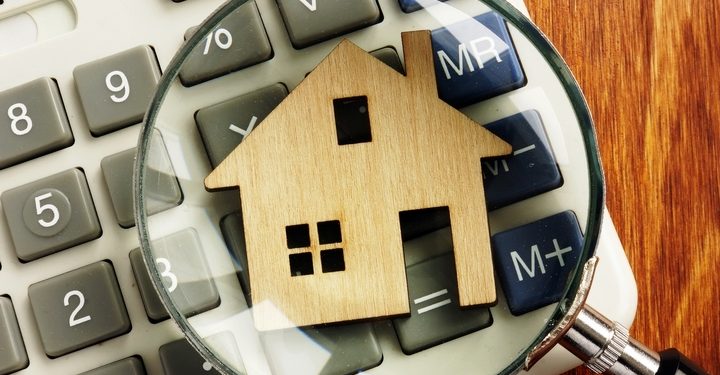16 Reverse Mortgage Pros and Cons

A reverse mortgage is preferred by many Canadians looking to stick to a budget, manage the value and investment they’ve put into their real estate, and to avoid being among the dreaded ‘cash poor’. That said, it’s not always a great decision nor a terrible one to make. There are pros and cons to reverse mortgages which need to be weighed.
Here is a comprehensive guide with sixteen different reverse mortgage pros and cons:
1. Pro – reverse mortgage is a great retirement planning tool

A reverse mortgage can help a retiree increase their monthly income, using oftentimes their largest investment asset which is their home. A reverse mortgage allows you to borrow against your home’s equity without you having to sacrifice ownership of your property.
2. Pro – there are no payments involved with reverse mortgages

A reverse mortgage does not operate like a traditional mortgage in the sense that no monthly payments are required. Instead, someone who has lent on a reverse mortgage makes payments either in a lump sum, through a line of credit, or optionally through a monthly amount.
3. Pro – there is no amount owing in death for reverse mortages

A reverse mortgage is automatically repaid in the event that the borrower dies, permanently moves from their address, or once the property is sold. Ultimately, this means should a borrower pass, this is not debt passed onto their family members.
4. Pro – costs are rolled into the loan

In a reverse mortgage, you’re going to pay higher than average costs in fees however these aren’t paid up front and are included in the loan amount.
5. Pro – you still have the title to your home

A reverse mortgage does not transfer ownership of your home to a lender. You still retain ownership of your home. All a reverse mortgage does is create a lien against the property.
6. Pro – your loan does not exceed the value of the property

A reverse mortgage is never going to exceed the value of your property which means you’re never going to have a massive bill to pay should you decide to move or sell. A reverse mortgage falls into the category of ‘non-recourse’ which means that the appraised value of your home protects you and ensures you never owe more than what’s been appraised.
7. Pro – a reverse mortgage can never evict you

Why a lot of Canadians avoid getting a reverse mortgage is because they believe in the myth that they can be evicted if they don’t pay. The truth behind a reverse mortgage is that you can never be evicted based on it. You leave your home when you choose and no one related to a reverse mortgage gets to tell you different.
8. Pro – you can take it in a lump sum

A major benefit to a reverse mortgage is that while you can spread out your payments across monthly installments, you can also receive it in a lump sum payment. You get to apply your payment as you please and not a cent of it is required to pay off the reverse mortgage until your property’s been sold.
9. Pro – it’s tax-free income

With a reverse mortgage in Canada, you do not have to pay taxes on it like it is income.
10. Con – you must be 62 to qualify for reverse mortgages

If you’re younger than 62 years of age, you do not qualify for a reverse mortgage in Canada.
11. Con – you have no guaranteed amount

The ways in which a reverse mortgage amount is calculated is based on several factors, such as age, eligible interest rates, and the value of one’s home of course. For some, the amount may be less than expected. Alternatively, it could also be higher!
12. Con – there may be higher costs with reverse mortgages

As attractive as a reverse mortgage can be, there are costs involved. These can include interest, loan origination fees, mortgage insurance fees, appraisal fees, title insurance fees, and closing costs. In general, these fees are higher than a traditional mortgage and can sort up to $30,000-$40,000.
13. Con – reverse mortgages may decrease equity

If you’re looking to bequeath a property to your family upon your death and/or to have that money go to your family, a reverse mortgage is going to decrease the equity you have in your home. Therefore, you do get the monthly income which comes with it however it can slowly eat away at the money that will be left over to provide to your heirs.
14. Con – perceptions of complexity

Although reverse mortgages are perceived to be complex and thereby are avoided by many would-be borrowers. Unfortunately, eligible seniors who can receive major benefit from a reverse mortgage are sometimes too intimidated to look into it.
15. Con – you can’t get a reverse mortgage with an existing mortgage

If you are still making payments on a conventional mortgage, you will not be able to qualify for a reverse mortgage. That said, if you make a commitment to use a reverse mortgage’s proceeds to pay off an existing mortgage at close, you may be able to qualify.
16. Con – reverse mortgages may have higher interest rates

In general, reverse mortgages should only be considered as a ‘last resort’ relating to increasing one’s monthly income. That’s because the interest rates can be much higher than traditional mortgages and the interest only compounds until the debt is fully paid off.


